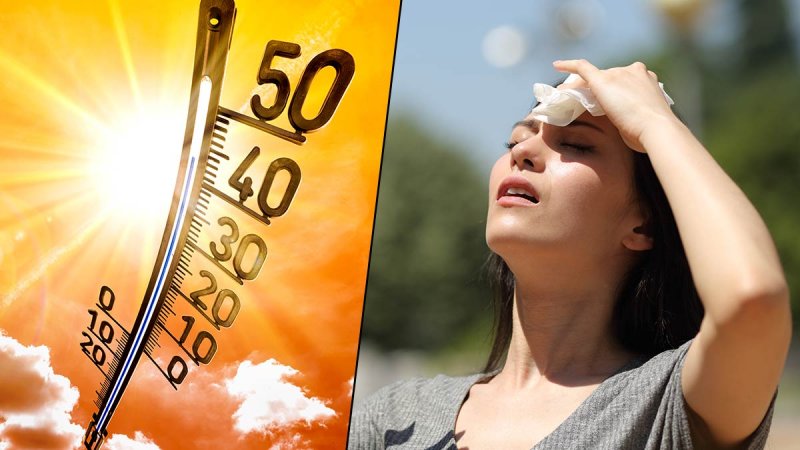Southern and eastern Ontario, along with southern and western Quebec, are bracing for a prolonged period of dangerously hot weather. Environment Canada issued a widespread heat warning on Saturday, marking the first significant heat event of the season. Residents are advised to take precautions as daytime temperatures are expected to soar between 31°C and 36°C, with the humidex making it feel a stifling 40°C to 50°C. This intense heat poses significant health risks, particularly for vulnerable populations. This article provides a detailed overview of the situation, offering guidance on how to stay cool and identifying those most at risk during this extreme weather event.
Understanding the Heatwave
The current heatwave is characterized by a combination of high temperatures and elevated humidity levels. The “humidex” is a measure that combines air temperature and humidity to reflect the perceived temperature, or how hot the weather feels to the average person. High humidity reduces the body's ability to cool itself through perspiration, making the heat feel even more intense and increasing the risk of heat-related illnesses.
This weather pattern is expected to persist for several days, putting a strain on individuals and infrastructure alike. Environment Canada warns that these conditions pose a significant threat, particularly for those who are not prepared or equipped to cope with extreme heat. It is crucial to understand the risks associated with such a heatwave and take proactive steps to protect oneself and others.
Who is at Greater Risk?
While everyone can be affected by extreme heat, certain populations are more vulnerable to heat-related illnesses. Understanding these risk factors can help individuals and communities target their efforts to protect those most in need.
- Older Adults: Seniors are particularly susceptible to heatstroke and other heat-related complications because their bodies are less efficient at regulating temperature. They may also have underlying health conditions or be taking medications that interfere with the body's ability to cool down. Isolation and limited mobility can further increase their risk.
- Infants and Young Children: Babies and young children rely heavily on others to keep them cool. They produce more heat relative to their size and have less developed sweating mechanisms. They also may not be able to effectively communicate when they are feeling too hot or thirsty.
- People with Chronic Illnesses: Individuals with pre-existing health conditions such as heart disease, respiratory problems, diabetes, and mental health issues are more vulnerable during a heatwave. These conditions can impair the body's ability to regulate temperature and increase the risk of complications.
- Outdoor Workers and Athletes: People who work or exercise outdoors for extended periods are at higher risk of heat exhaustion and heatstroke. Strenuous physical activity increases body temperature, and exposure to direct sunlight can further exacerbate the effects of the heat.
- People Living in Urban Areas: Urban areas tend to be hotter than surrounding rural areas due to the "urban heat island effect." This phenomenon is caused by the concentration of buildings, pavement, and other surfaces that absorb and retain heat.
- People Experiencing Homelessness: Individuals without stable housing are particularly vulnerable as they often lack access to air conditioning, shade, and adequate hydration. They may also have limited resources to protect themselves from the heat.
How to Stay Cool and Safe During the Heatwave
The key to surviving a heatwave is to take proactive steps to stay cool, hydrated, and informed. Here are some practical tips to help you mitigate the risks:
Hydration is Key:
- Drink Plenty of Fluids: Water is the best choice, but you can also consume sports drinks with electrolytes to replenish lost minerals. Avoid sugary drinks and alcohol, which can dehydrate you.
- Don't Wait Until You're Thirsty: Drink regularly throughout the day, even if you don't feel thirsty.
- Carry a Water Bottle: Keep a water bottle with you and refill it frequently.
Seek Cool Environments:
- Spend Time in Air-Conditioned Places: Libraries, community centers, shopping malls, and cooling centers offer refuge from the heat.
- Use Fans: While fans can provide some relief, they are less effective when temperatures are extremely high.
- Take Cool Showers or Baths: Cooling your body with water can help lower your core temperature.
- Limit Outdoor Activities: Reschedule or postpone strenuous outdoor activities until the heatwave subsides. If you must be outside, take frequent breaks in the shade.
Dress Appropriately:
- Wear Loose-Fitting, Light-Colored Clothing: Light colors reflect sunlight and loose clothing allows for better air circulation.
- Wear a Hat and Sunglasses: Protect yourself from the sun's rays with a wide-brimmed hat and sunglasses.
- Apply Sunscreen: Protect your skin from sunburn, which can impair your body's ability to regulate temperature.
Monitor Your Health and Others:
- Check on Vulnerable Individuals: Regularly check on elderly neighbors, friends, and relatives, especially those who live alone.
- Know the Symptoms of Heat-Related Illnesses: Be familiar with the signs of heat exhaustion and heatstroke, and seek medical attention immediately if you experience any of these symptoms.
- Never Leave Children or Pets in Vehicles: Even on mildly warm days, the temperature inside a car can rise to dangerous levels within minutes.
Home Precautions:
- Close Curtains and Blinds: Block out sunlight during the hottest part of the day to keep your home cooler.
- Use Your Oven and Stove Sparingly: Cooking can generate heat inside your home. Opt for cooler meals like salads and sandwiches.
- Consider a Portable Air Conditioner: If you don't have central air conditioning, a portable unit can help cool a small room.
Recognizing and Responding to Heat-Related Illnesses
Knowing the signs of heat exhaustion and heatstroke can be life-saving.
- Heat Exhaustion: Symptoms of heat exhaustion include heavy sweating, weakness, dizziness, headache, nausea, vomiting, muscle cramps, and a rapid, weak pulse. If you suspect someone has heat exhaustion, move them to a cool place, give them fluids, and loosen their clothing.
- Heatstroke: Heatstroke is a medical emergency. Symptoms include a high body temperature (above 40°C), confusion, disorientation, seizures, and loss of consciousness. If you suspect someone has heatstroke, call 911 immediately and try to cool them down while waiting for medical help.
Staying Informed
Stay informed about the heatwave by monitoring weather forecasts and heeding warnings from Environment Canada and local authorities. Pay attention to public health advisories and follow their recommendations.
Conclusion
The current heatwave in Ontario and Quebec poses a serious threat to public health. By understanding the risks, taking precautions, and staying informed, you can protect yourself and others from heat-related illnesses. Remember to stay hydrated, seek cool environments, and monitor your health and the well-being of those around you.
Taking these simple steps can help you navigate this period of extreme heat safely and minimize its impact on your health and quality of life. Remember to check on vulnerable individuals, and don't hesitate to seek medical attention if you or someone you know experiences symptoms of heat exhaustion or heatstroke. Stay safe and stay cool.
Word Count: 1,290

Ann Cinzar
Ann Cinzar lives in Ottawa, Ontario with her husband Mike, daughter Rosie, and their dog Reese. She is passionate about family life and loves Canada.






Leave a comment?
To write a comment, you must login or register first.